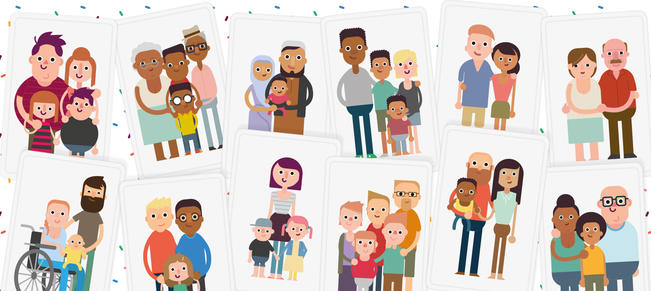Course Summary:
We live at the bottom of an ocean – an ocean of air! Unlike the ocean of water, we can’t easily tell what is happening in this ocean of air. In our module, “The Weather Machine”, we will explore the parts that make up our atmosphere and how they work together to create our weather. We will also explore how meteorologists use patterns in our weather to forecast future weather events and practice reading weather maps. Finally, we will examine some important differences between weather and climate as well as issues surrounding climate change.

Teaching Sight Words can seem tedious and repetitive...because it is! This course is for Primary teachers who will be teaching their students sight words (or sometimes called Snap Words). Finding enjoyable and creative ways to teach, practice, and solidify sight words into a child's vocabulary is not always easy. Giving the list at the start of the week and testing students on it at the end of the week is a thing of the past. Sight words need to be interactive, giving students the ability to say, spell, write, and use them in all subject areas. This course will provide teachers with the reasons behind teaching sight words, the many different factors that go into how to teach sight words, and the ways in which a student will get the most out of the sight words.
Mini Lesson, modeling, conferring, small group work, assessment, reflection…Have you ever thought about all of the components of reading workshop in an elementary classroom? For a short part of your day, it can certainly be overwhelming. In this course, pre-service and current elementary educators will explore elements that lead to a productive, enriching reading workshop. Within a one-hour reading lesson, teachers work to bridge students' prior literacy experiences with new reading strategies, while then hosting small group sessions and conferences to further students’ skills in print work and comprehension. After all of the teaching and application is done, teachers must then monitor and assess student progress. In this course, we’ll dive deep into each component of a reading lesson (mini lesson, teaching, one-to-one conferring, strategy group work, assessment, and reflection) to first determine the purpose for each. Following, we’ll collaborate to create best practices for how each component can be carried out in a meaningful, efficient way.
Literacy in Mathematics - In this course we will explore the benefits and disadvantages of integrating literacy into a mathematics class. We will look at a comparison of how literacy effects elementary level, middle school level, and at the high school level. In this course, we will look at different ways to implement literacy into the mathematics classroom. We will look at how literacy in mathematics will affect students outside of the classroom, in the real world, and the benefits that literacy can bring. Lastly, we will explore the effects of different kinds of literacy such as digital literacy, reading, vocabulary, calculator literacy, and writing in terms of students within the math classroom. Overall, we are just going to explore all aspects of literacy and mathematics and we will discuss the pros, cons, advantages and disadvantages at all age levels in order to see if the effects are beneficial enough to implement in your classes.
Working with Parents and Families of Children in Early Childhood and Childhood - Kari Mavrovouniotis
This course examines how working with parents/caregivers helps teachers to develop a better understanding of their students, and ways to develop appropriate strategies for successful collaborations with parents in schools and communities. Includes analyses of parenting styles, family structures and dynamics, techniques for improving communication between parents/caregivers, teachers, and children, as well as strategies for using community-based resources to support families and children.

This course will teach prospective students about problem-based learning in the mathematics classroom. Students will learn what problem-based learning is, how to apply it in the classroom, and effective ways to assess and evaluate student understanding.
Would you rather eat food from only McDonald’s or only from Taco Bell for one full month?
Would you rather visit 100 years in the future or 100 years in the past?
Sometimes there is no clear right or wrong.
In this unit, we will explore argumentative writing and how to discuss topics with people of opposing viewpoints. We will learn vocabulary associated with argument writing and apply that terminology to articles we will read and discuss. You will analyze arguments to determine how strong or weak it is and what characteristics a strong and weak argument possesses. What makes this argument stronger or more valid than another? You will then develop a research paper and/or project where you will argue either for or against a topic of your choosing. Ultimately, you will learn that it is not about who is right, but about having the ability to see something from more than one point of view, especially just your own!
Course name: Introduction to Argumentative Writing
Intended Audience: middle school students - 8th grade.
Universal Design for Learning in Higher Education: An Introduction to UDL for Higher Education Instructors
Despite its roots living in K-12 education, the three principles of Universal Design for Learning (UDL): “Provide multiple means of engagement, provide multiple means of representation, and provide multiple means of action and expression” (Meyer, A., Rose, D.H., & Gordon, D., 2014) can be implemented successfully in higher education institutions to establish an equitable and inclusive learning experience for all students. In this course, participants will obtain a foundation in UDL for higher education instructors, including practical steps they can take to begin to integrate UDL principles into their curriculum and online course design.
Reading Comprehension Strategies for Elementary Students
There are five essential components that good readers engage in: phonemic awareness, phonics, fluency, vocabulary, spelling and comprehension. Of those components, comprehension is the most difficult aspect of reading for elementary students to master. While many young readers can fluently decode words on a page, they often struggle to stop, think and question what they are reading about. However, there are many different strategies that young readers can utilize to help them make meaning about the texts they read. In this course, students will learn and practice various reading comprehension strategies such as utilizing prior knowledge, envisioning, questioning, predicting, identifying story elements and retelling. These strategies will help them think deeply and critically about texts, giving them a foundation for future learning.